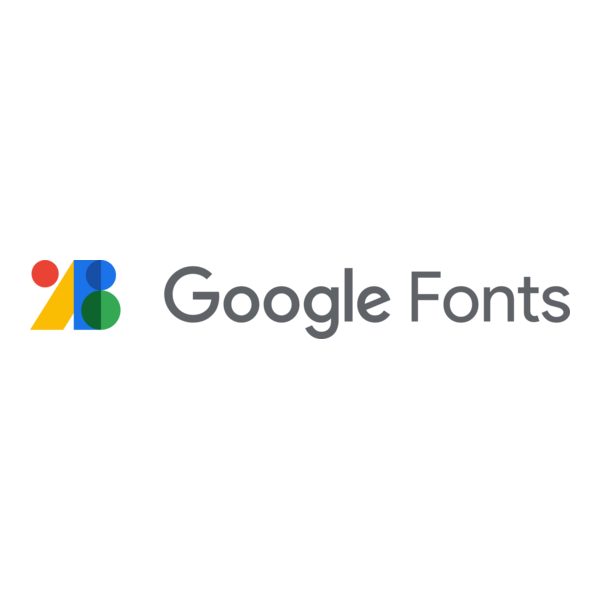Google Fonts AI: Complete Buyer's Guide
Foundational typography infrastructure enhanced with machine learning capabilities
Google Fonts AI represents foundational typography infrastructure enhanced with machine learning capabilities, serving as a performance-optimized font delivery platform rather than a primary AI typography creation tool. While positioned within the broader AI typography landscape, Google Fonts operates as font hosting infrastructure with intelligent recommendation capabilities, differentiating significantly from generative AI platforms like Adobe Firefly or specialized typography creation tools[47][52].
Market Position & Maturity
Market Standing
Google Fonts demonstrates dominance in free tier web fonts, though it serves different market needs than enterprise typography management solutions or advanced AI generation platforms[47][52].
Company Maturity
Benefits from Google's established infrastructure and operational scale, ensuring long-term platform availability and continued development investment[55].
Growth Trajectory
Reflects Google's broader commitment to web infrastructure, with continued investment in variable font optimization and performance enhancement capabilities[41][50][53].
Industry Recognition
Emerges through widespread adoption across web development communities, with strong developer satisfaction ratings compared to creative director feedback[52][56].
Strategic Partnerships
Includes integration support for modern web frameworks and content management systems, though lacks the extensive creative ecosystem partnerships found in Adobe's offerings[39][50].
Longevity Assessment
Shows strong indicators through Google's infrastructure commitment and continued platform development investment[55].
Proof of Capabilities
Customer Evidence
Demonstrates varied implementation success across different professional roles, with developers reporting higher satisfaction than creative directors due to workflow alignment differences[52][56].
Quantified Outcomes
Typical integration timelines of 1-3 weeks for full implementation, with potential ROI emerging within 2 months through reduced design iteration cycles[52][56].
Case Study Analysis
Reveals successful implementations in high-traffic websites requiring performance optimization, rapid prototyping environments, and educational applications with diverse language requirements[46][48][56].
Market Validation
Shows substantial website usage demonstrating platform reliability and performance capabilities, with automated fallbacks during service interruptions maintaining high availability[41][44][52].
Competitive Wins
Emerge in scenarios prioritizing cost optimization and technical performance over creative control, particularly for organizations under typography spend constraints[47][52].
AI Technology
Centers on intelligent font recommendation and pairing suggestions rather than generative creation capabilities. The AI recommendation engine analyzes design context to suggest harmonious font combinations, reducing manual trial-and-error in font selection[52].
Architecture
Leverages Google's cloud infrastructure for exceptional reliability and global content delivery network optimization. The platform operates with automated fallbacks during service interruptions, maintaining high reliability for mission-critical applications[41][44].
Primary Competitors
Adobe Fonts with superior Creative Cloud integration, Monotype's enterprise font management capabilities, and specialized AI typography platforms offering generative creation features[47][50][52].
Competitive Advantages
Immediate TCO benefits, seamless API integration supporting modern web frameworks, and browser compatibility advantages versus self-hosted solutions[39][41][46][53].
Market Positioning
Reveals Google Fonts as foundational infrastructure rather than creative tool, complementing rather than replacing Adobe Creative Cloud workflows[47][50].
Win/Loss Scenarios
Favor Google Fonts in situations prioritizing web performance optimization over creative typography generation, cost minimization over advanced AI capabilities, and technical implementation efficiency over collaborative design features[39][47][52].
Key Features

Pros & Cons
Use Cases
Integrations
Pricing
Featured In Articles
Comprehensive analysis of AI Typography Tools for AI Design for AI Design professionals. Expert evaluation of features, pricing, and implementation.
How We Researched This Guide
About This Guide: This comprehensive analysis is based on extensive competitive intelligence and real-world implementation data from leading AI vendors. StayModern updates this guide quarterly to reflect market developments and vendor performance changes.
57+ verified sources per analysis including official documentation, customer reviews, analyst reports, and industry publications.
- • Vendor documentation & whitepapers
- • Customer testimonials & case studies
- • Third-party analyst assessments
- • Industry benchmarking reports
Standardized assessment framework across 8 key dimensions for objective comparison.
- • Technology capabilities & architecture
- • Market position & customer evidence
- • Implementation experience & support
- • Pricing value & competitive position
Research is refreshed every 90 days to capture market changes and new vendor capabilities.
- • New product releases & features
- • Market positioning changes
- • Customer feedback integration
- • Competitive landscape shifts
Every claim is source-linked with direct citations to original materials for verification.
- • Clickable citation links
- • Original source attribution
- • Date stamps for currency
- • Quality score validation
Analysis follows systematic research protocols with consistent evaluation frameworks.
- • Standardized assessment criteria
- • Multi-source verification process
- • Consistent evaluation methodology
- • Quality assurance protocols
Buyer-focused analysis with transparent methodology and factual accuracy commitment.
- • Objective comparative analysis
- • Transparent research methodology
- • Factual accuracy commitment
- • Continuous quality improvement
Quality Commitment: If you find any inaccuracies in our analysis on this page, please contact us at research@staymodern.ai. We're committed to maintaining the highest standards of research integrity and will investigate and correct any issues promptly.